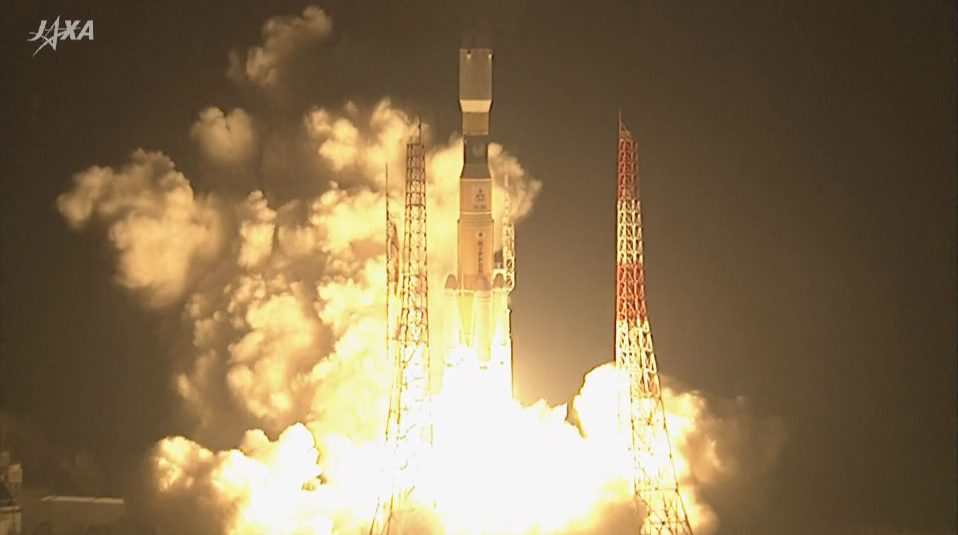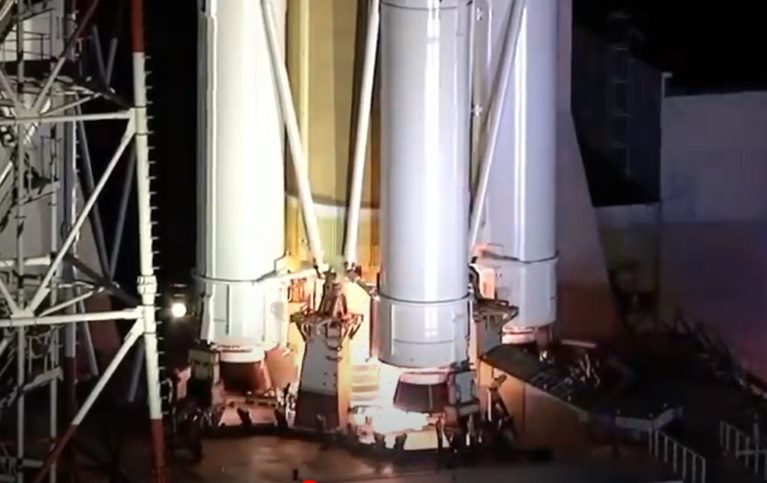On 20 May 2020, at 1731 GMT, the last planned launch of the MHI-built, H-2B variant took place. The mission lifted-off from the Tanegashima Space Center, Japan, carrying the HTV-9 cargo freighter into LEO. The HTV (H-II Transfer Vehicle) is part of Japan’s contribution to the ISS (International Space Station) carrying supplies, equipment and experiments to the space station.
Update on 26 May 2020: The HTV-9 (Kounoutori 9) cargo ship was captured by the ISS Canadarm-2 at 1213 GMT on 25 May 2020 and berthed on the nadir port of the Harmony module at 1446 GMT (all times from Jonathan McDowell).

The final launch of the H-2B variant lifts-off from Tanegashima carrying the HTV-9 freighter. Courtesy of JAXA
HTV-9 is carrying 6,200 kg of cargo to the ISS. Amongst this is the last batch of six lithium-ion batteries that are being used to upgrade the station’s electrical systems. The 48 older nickel-hydrogen batteries are being systematically replaced by 24 lithium-ion units. A process that can now be completed with these new batteries.
This mission also marks the last use of this generation of HTV freighter. JAXA is developing the next-generation HTV-X series in tandem with the upcoming H-3 vehicle being developed by MHI (Mitsubishi Heavy Industries). The first HTV-X launch is planned in 2022 (whereas the H-3 rocket is anticipating its maiden launch in 2021). The H-3 is not just going to replace the H-2B however, its fellow H-2 variant, the H-2A, will also be replaced by the H-3. The H-2A transition however, will not happen until at least the 2022/23 time-frame.
Phil Hylands contributed to this story








